Presentation Theme and Goals
- The concept of the Product life cycle (PLC) and its importance.
- Importance of the PLC for marketing managers.
- Consequences of the lack of understanding of PLC.
- Explanation of Apple Inc.’s target market strategy.
- Relation of brand equity to customer perception.
- Stages of the PLC and its implications for iPhone.
This presentation entails the concept of the Product Life Cycle and its importance in today’s modern business environment. The primary purpose of this presentation is to discuss the significance of the PLC for marketing managers for preparing marketing strategies. The target market strategy of Apple Inc. is also analyzed for understanding the PLC. The negative consequences of the lack of understanding of this concept are mentioned in this presentation. Furthermore, it covers the importance of brand equity for creating a positive product image by giving an example of Apple’s iPhone.
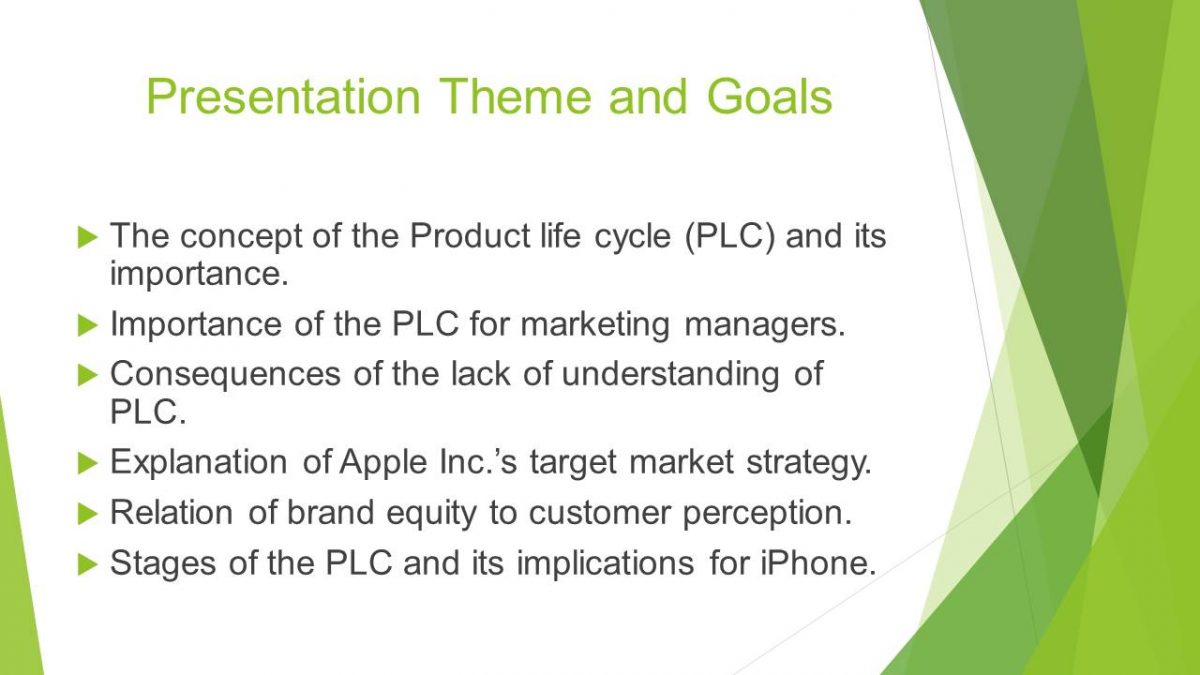
The PLC Concept
- Development and dismissal of a product.
- Every product goes through this life cycle.
- Four stages of the product life cycle:
- uIntroduction, growth, maturity, and decline (Vallabhaneni, 2015).
- The concept relates to marketing and advertising.
The concept of life cycle explains that every product moves in four phases over time. However, the duration of each stage depends on the market conditions and the nature of the product. The PLC concept explains that each product has a life starting from its introduction and development to the time when it leaves the market. Therefore, decision-makers use this concept to decide when and how the product needs to be advertised and marketed in a particular market.
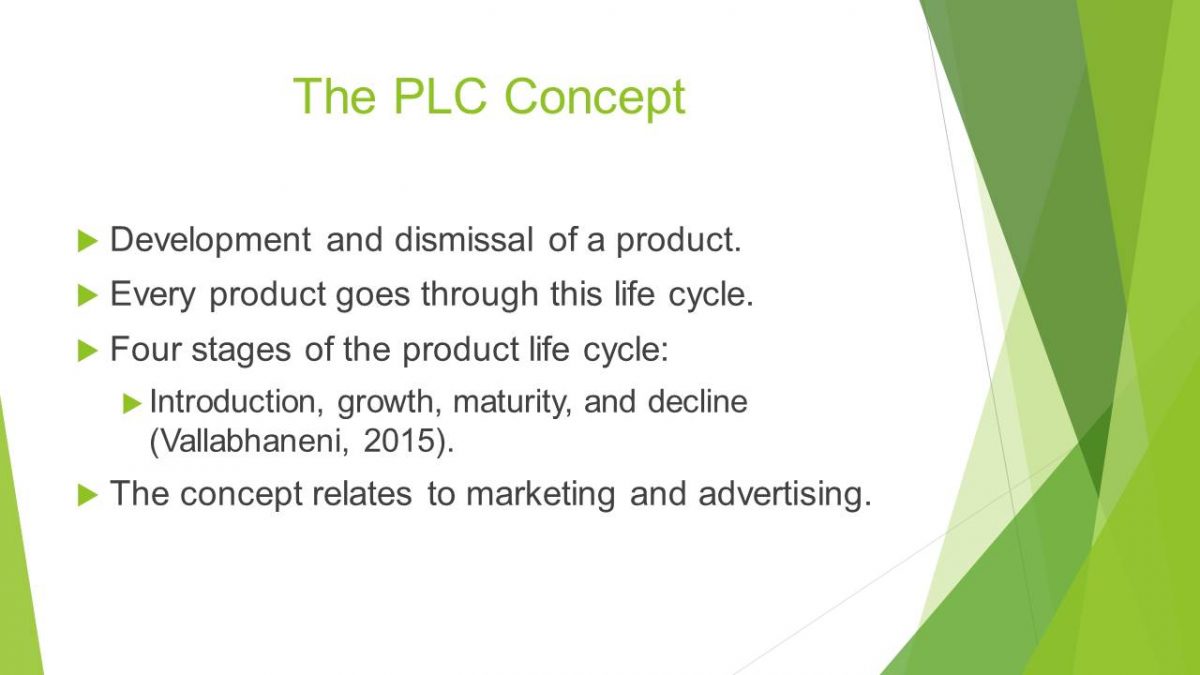
Importance of PLC for Marketing Managers
- Marketing managers prepare advertising strategies based on the PLC (Vallabhaneni, 2015).
- Allocation of resources to avoid failure.
- Special focus on the PLC to achieve a competitive advantage.
- Advertising decisions relevant to the market condition.
- Creating and maintaining demand for the product.
- Mitigate risks and competition.
Marketing managers also play a key role in increasing the sales of a product. A manager can review the current stage of the product in the market and prepare the advertising strategy according to it. The analysis reduces the deployment of valuable resources of a company when the timing is not appropriate. The concept of the PLC is useful to reduce the threat of competition in the market and enables the company to gain a competitive advantage.
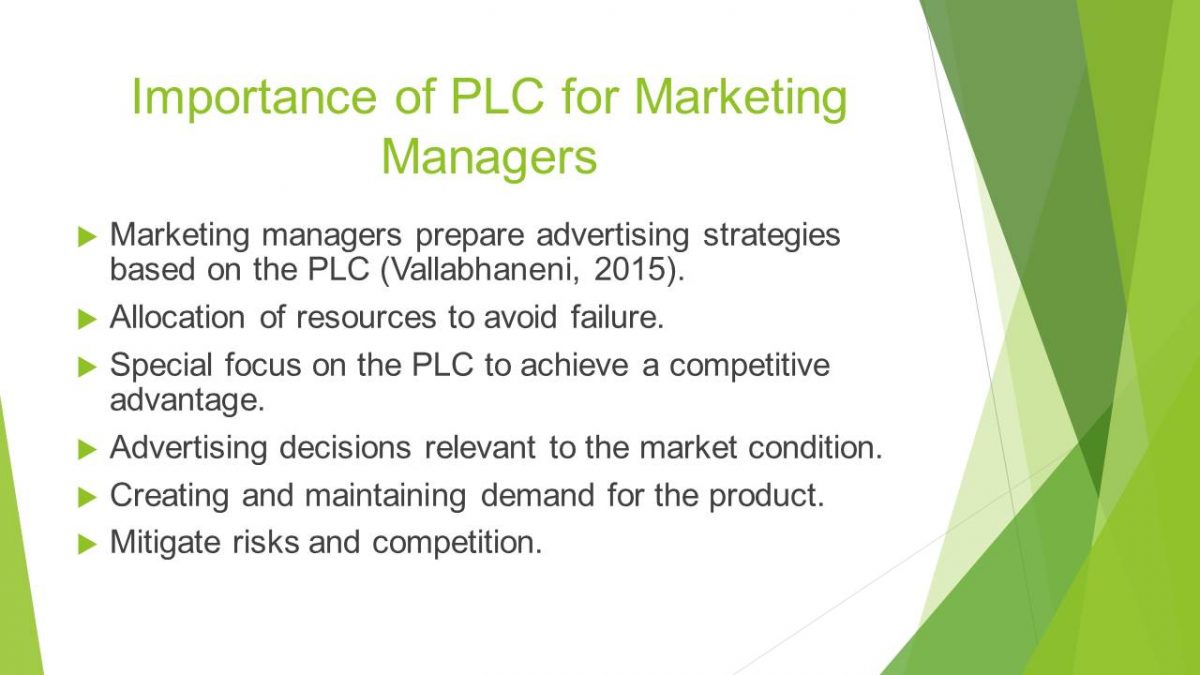
Negative Consequences in the Absence of the PLC Monitoring
Lack of understanding and adoption of the PLC:
- Sales may decline.
- Cost may increase.
- Leaders may miss opportunities.
- Advertising strategy may not generate the expected outcomes (Pride & Ferrell, 2015).
- Lack of control over production and sales.
- Productivity and efficiency may decline eventually.
The sales strategy has a direct link with the position of a product in the target market. It is possible that the company may not achieve the intended market share due to lack of advertising at the right time. The increasing advertising cost will reduce the profit due to its low impact on the sales of the product. The production cost will be higher that will reduce the efficiency of the business and its product.
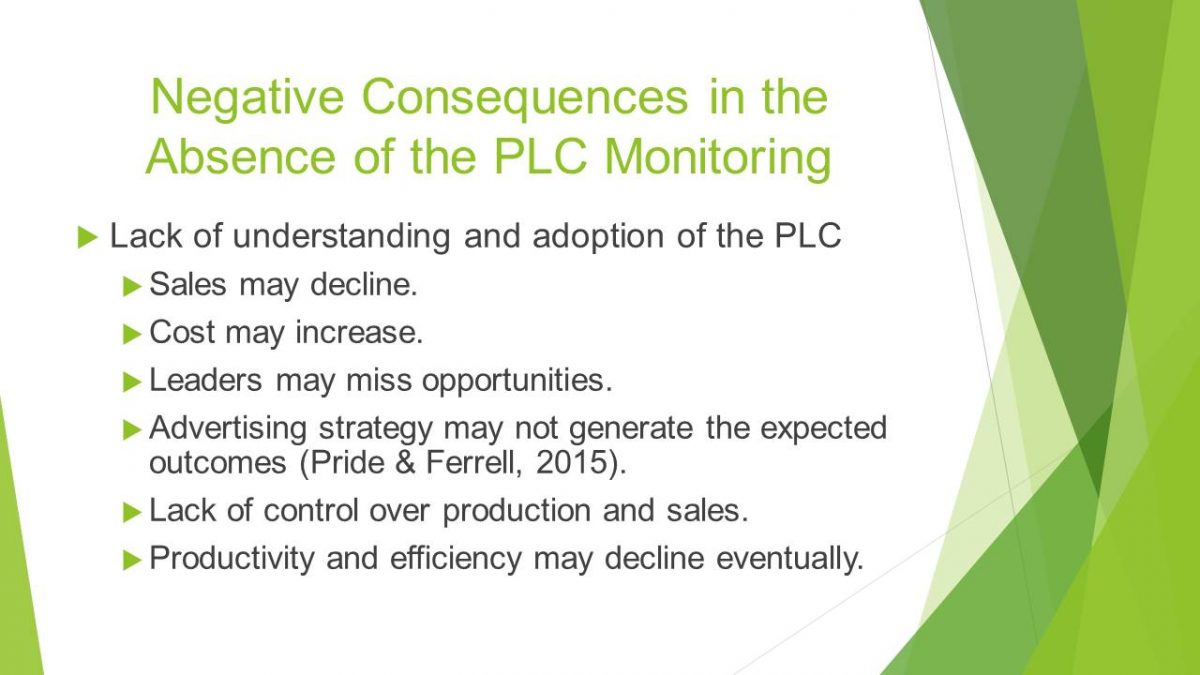
Apple Inc. and Its Products/Services
- Apple Inc. is an American technology company.
- Its headquarters is in Cupertino, California.
- Main products are iPhone, iPod, and iPad, etc.
- Services include Apple Store, App Store, and iTunes.
- A large size company in terms of revenues.
- Engaged in computer hardware, software, and smartphone industries (Patel, 2019).
Apple Inc. is an American multinational corporation that is headquartered in Cupertino. The brand is well-known in the global market for its hardware and software products and services. It is a large size company that mainly generates its revenues from the sales of iPhones. iPhone has high brand recognition and reputation in the global market due to its technologically advanced features. The company operates in the worldwide business environment through effective marketing and advertising strategies.
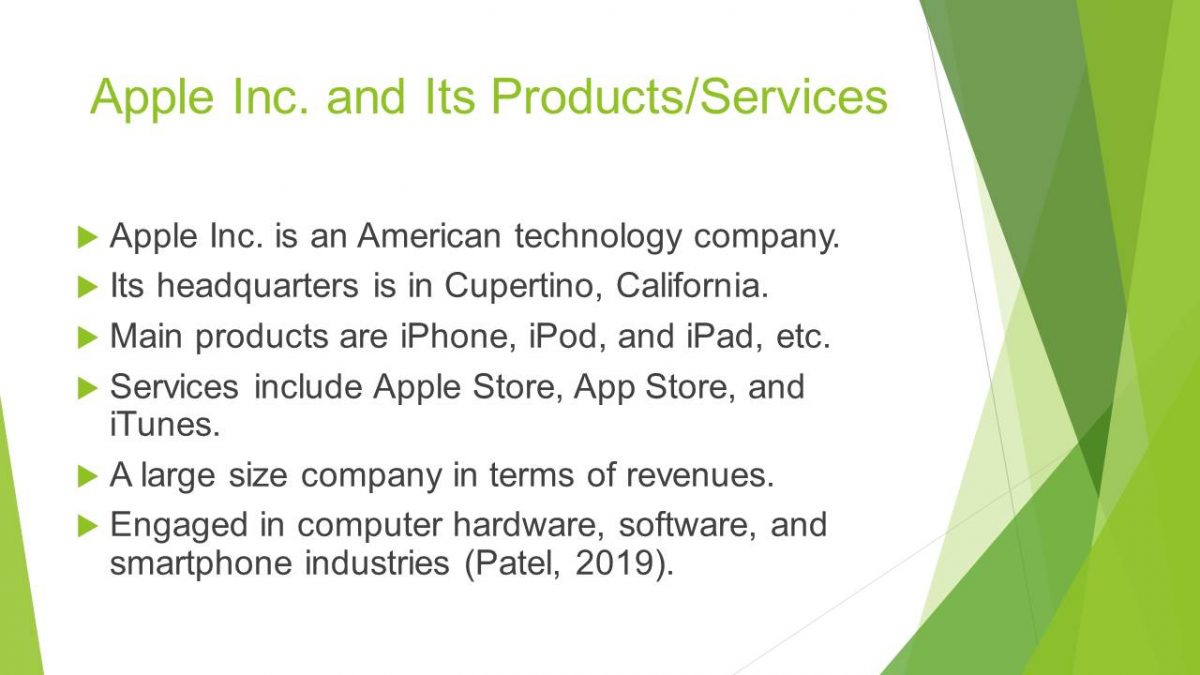
Target Market – iPhone
- Apple’s primary target market is the US.
- It sells iPhones globally.
- Target market:
- Individuals who can use smartphones.
- Individuals with high income.
- Individuals who prefer technologically advanced features.
The primary market of Apple is the US where it generates the highest number of sales. It also sells iPhones in other markets as well through its website and stores. The target customers include individuals who prefer using smartphones and have a high disposal income for buying expensive phones.
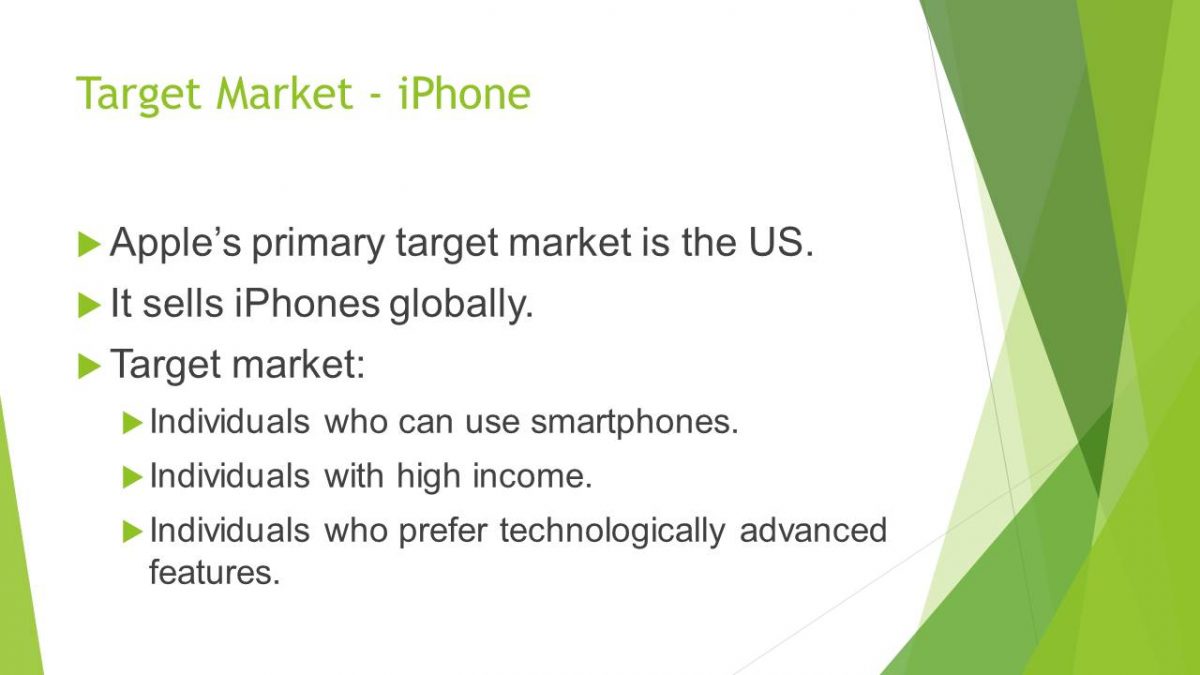
Target Market Strategy of Apple Inc.
- Strong brand personality.
- User-friendly applications and devices.
- Community connection and rethinking processes.
- Identification of customer needs and preferences (Patel, 2019)
- Unique value proposition and avoidance of price wars.
- Rapid adoption of advanced technology.
The target market strategy of Apple Inc. is straight forward that aims to achieve a high level of user satisfaction. The marketing managers continuously focus on innovation, customer needs, and product development to retain the market share. Apple Inc. does not need to engage in price competition as it has a unique brand value due to its innovative products and after-sales services. The continuous product development and improvement with new features reflect the goal-oriented strategy of Apple Inc. that differentiates it from its competitors in the global market.

Role of Brand Equity in Creating Positive Image
- Brand equity is ‘Apple’ brand’s value.
- Achieved through effective communication (Pride & Ferrell, 2015).
- Redesigning and improvement of a product.
- User-bonding is essential for iPhone’s sales.
- Expressing the meaning of the brand.
- Customer perception also has a high value.
A company can achieve high brand equity by enhancing the value of a brand. One way is to share information with customers to improve their understanding of the brand which creates a positive perception about the product and the company. The coherent bonding of users with iPhone is essential to achieve the goal of brand equity which means that customers are willing to buy the product even at high prices. Effective communication strategies are also necessary for fulfilling the goal of advertising. The design and features of smartphone devices should be attractive to users.
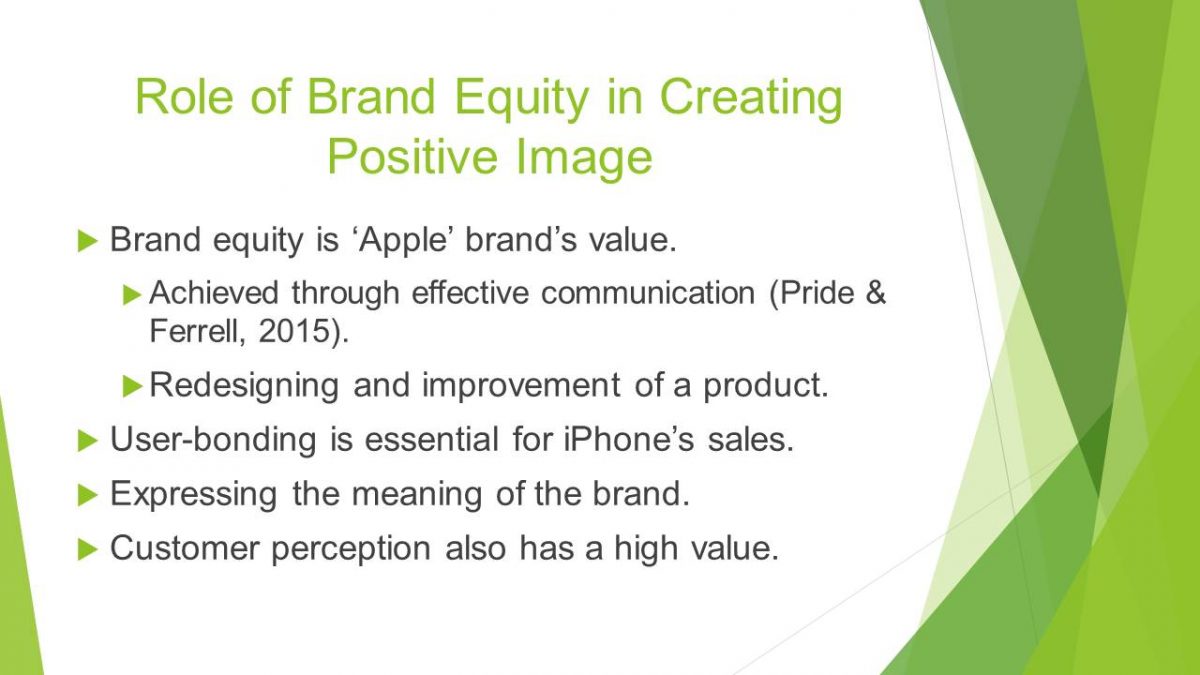
Four Stages of the PLC
- Every product has four stages in the PLC.
- The duration of the PLC varies for all products (Pride & Ferrell, 2015).
- The introduction stage refers to the launch of a product.
- The growth stage generates growing sales.
- The maturity stage focuses on maintaining the market share.
- The decline stage means less demand for the product.
The PLC has four stages that every product goes through. The initial stage is the introduction stage in which a company launches its product in the market. The growth stage begins when product sales expand in the target market. In the maturity stage, the product continues to sell in the market, but the company faces difficulties in maintaining its market share. However, every product experiences a decline in its demand as it becomes outdated or market saturates.
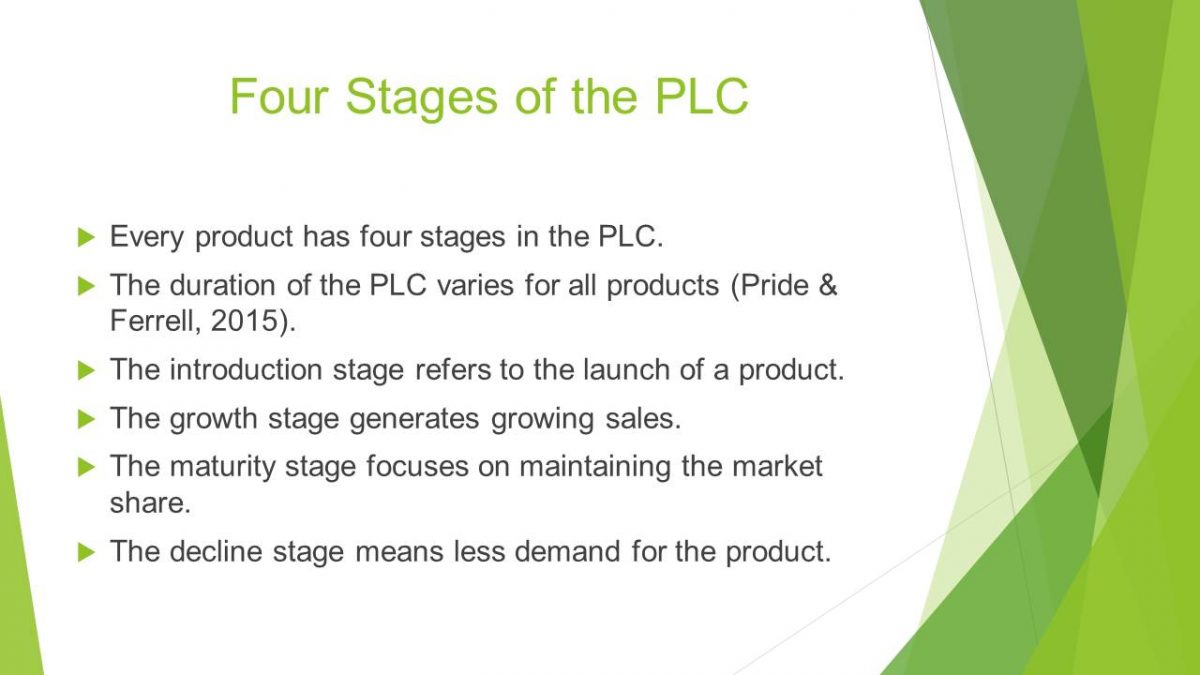
Implication of the PLC Stages on the Price and Product of Apple Inc.
- iPhone has a premium price in the introduction stage (Patel, 2019).
- iPhone has a strong brand image and reputation.
- iPhone models become outdated in the maturity stage.
- A new model replaces the existing model in the decline stage.
- The PLC of an iPhone is short.
iPhone has a strong brand reputation in the global market that allows the company to charge a high price at the time of launching its new model. The product reaches the maturity stage early due to the rapid changes in technology and the launch of new products by competitors. The company is forced to introduce a new model to avoid market share loss. The PLC of an iPhone model is just one year and is replaced by a new model.
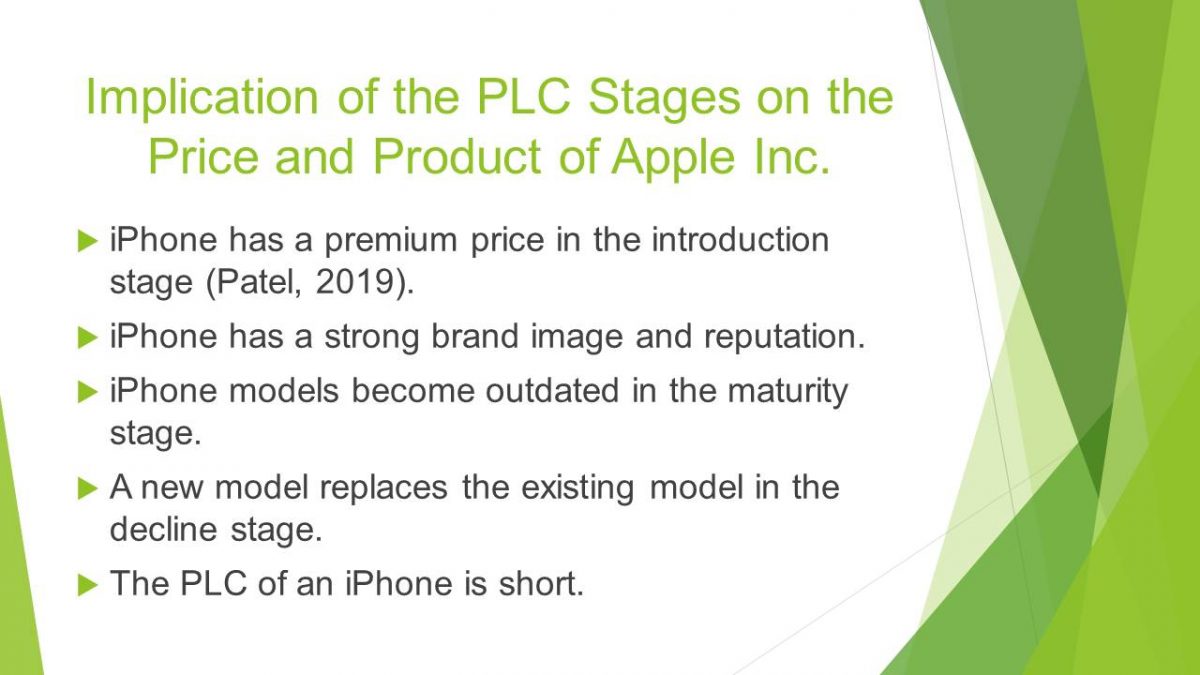
Implication of the PLC Stages on Competition and Profitability of iPhone
- iPhone has high brand equity (Patel, 2019).
- iPhone has a low threat of competition at each stage.
- It generates a high profit in the introduction stage.
- It does not get involved in the price war at any stage.
- Apple boosts sales of iPhone frequently after launching it.
- The launch of a new model adds value to the business.
iPhone is a popular brand that adopts effective marketing strategies at the time of launching its new model in the market. However, it does not have the threat of pricing or product competition due to its unique characteristics. Although its sales decrease in the decline stage, the product earns a high profit until its maturity stage. The product has high brand equity that differentiates it from competitors and it does not engage in the price war.
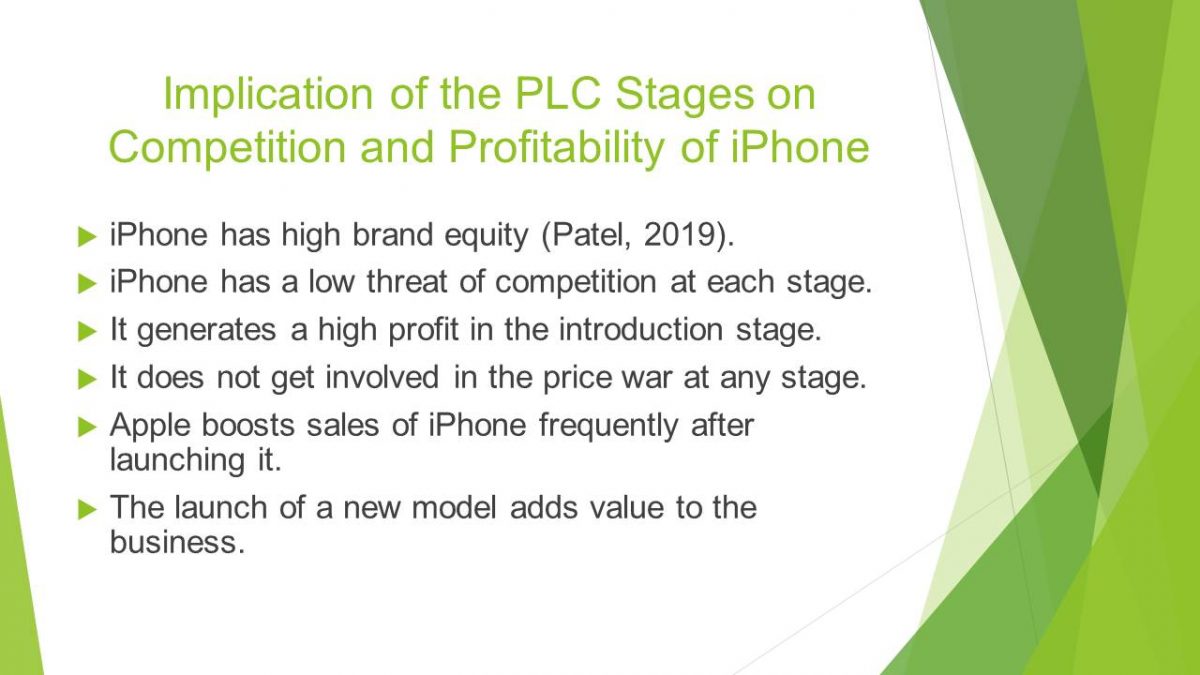
References
Patel, N. (2019). 7 key strategies that you must learn from Apple’s marketing. Web.
Pride, W. M., & Ferrell, O. C. (2015). Marketing 2016 (18th ed.). Mason, OH: Cengage Learning.
Vallabhaneni, S. R. (2015). Wiley CIAExcel exam review 2016: Part 3, internal audit knowledge elements (7th ed.). Hoboken, NJ: John Wiley & Sons.